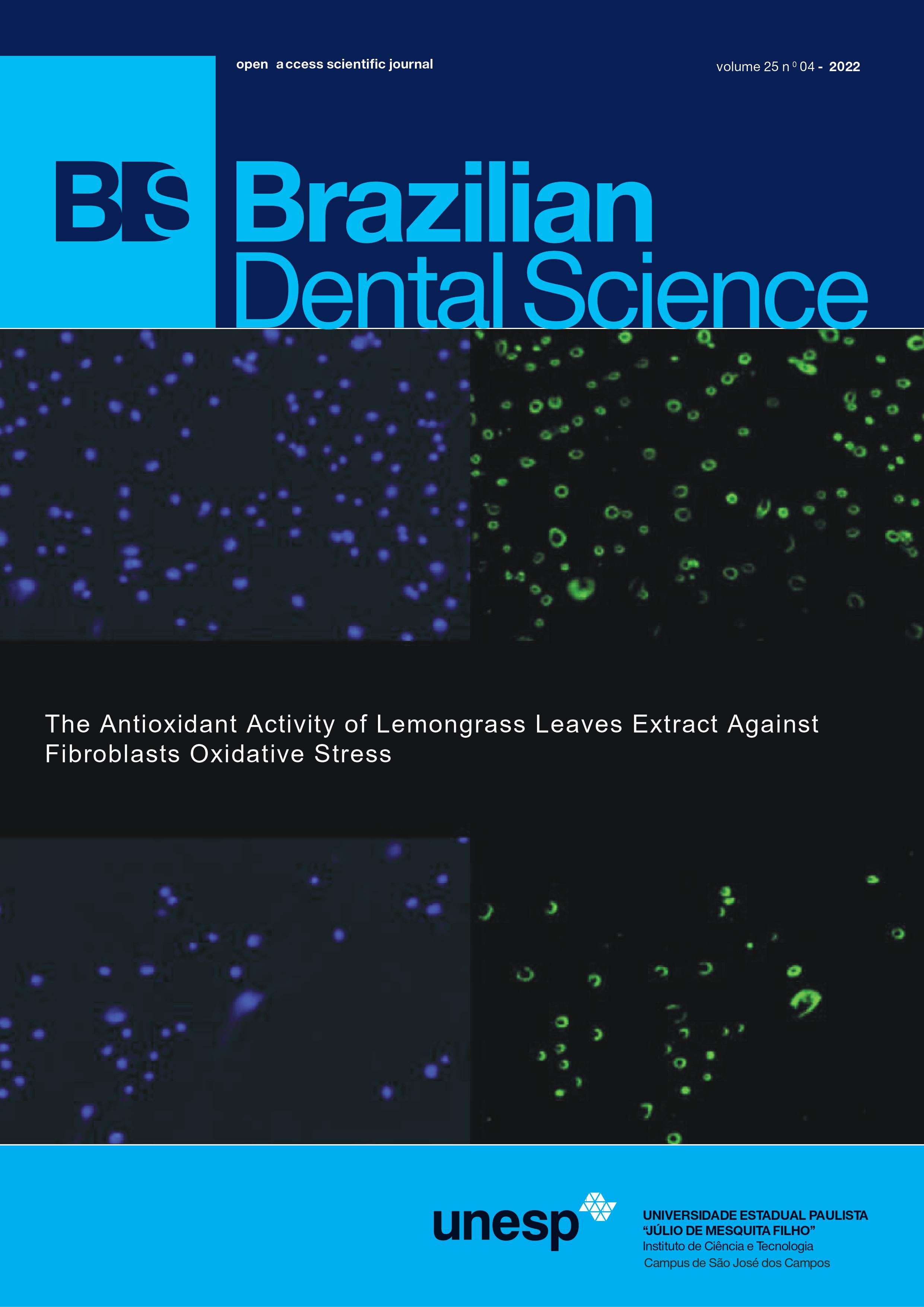Effect of prosthetic design and restorative material on the stress distribution of implant-supported 3-unit fixed partial dentures: 3D-FEA
DOI:
https://doi.org/10.4322/bds.2022.e3523Abstract
Objective: Evaluate the effect of Implant prosthetic designs and restorative material on the stress concentration
of 3-unit implant-supported restoration with two restorative materials. Material and Methods: Six different
screw-retained prostheses models were virtually designed and divided according to design: fixed bridge (FB),
cantilever bridge (CB), and separate crowns (SC). Then, each model was also divided into two subgroups
according to the material: Ultra-translucent multi-layered zirconia (Kuraray Noritake Dental Inc., Japan); or a
combination of PEEK (Polyetheretherketone) framework (BioHPP, Bredent, GmbH & Co., KG, Germany) and
zirconia (ZR) crowns (ultra-translucent multi-layered zirconia, Kuraray Noritake Dental Inc., Japan). A vertical
load of 100 N was applied statically perpendicular to the central fossa of each crown. The von-Mises stress was
computed using Solidworks software (SolidWorks Corp, Massachusetts, USA), based on the physical parameters
of the materials. Results: FB showed the lowest von Mises stress values out of all 3 design models. Moreover,
the combination of PEEK and zirconia showed strain values smaller than full zirconia. The highest von Mises
stress value was recorded in CB with the zirconia subgroup at (1098 MPa) while the lowest von Mises stress
value was recorded in FB with combined PEEK and zirconia subgroup at (190 MPa). Conclusion: For three-unit
implant supported restorations, the use of PEEK framework and zirconia crowns was found to be more favorable
biomechanically regarding the prosthetic components, implant and bone stresses.
KEYWORDS
Biomechanics; Dental implants; Implant prosthetic designs; Finite element analysis; CAD/CAM.
Downloads
Downloads
Published
How to Cite
Issue
Section
License
Brazilian Dental Science uses the Creative Commons (CC-BY 4.0) license, thus preserving the integrity of articles in an open access environment. The journal allows the author to retain publishing rights without restrictions.
=================




























